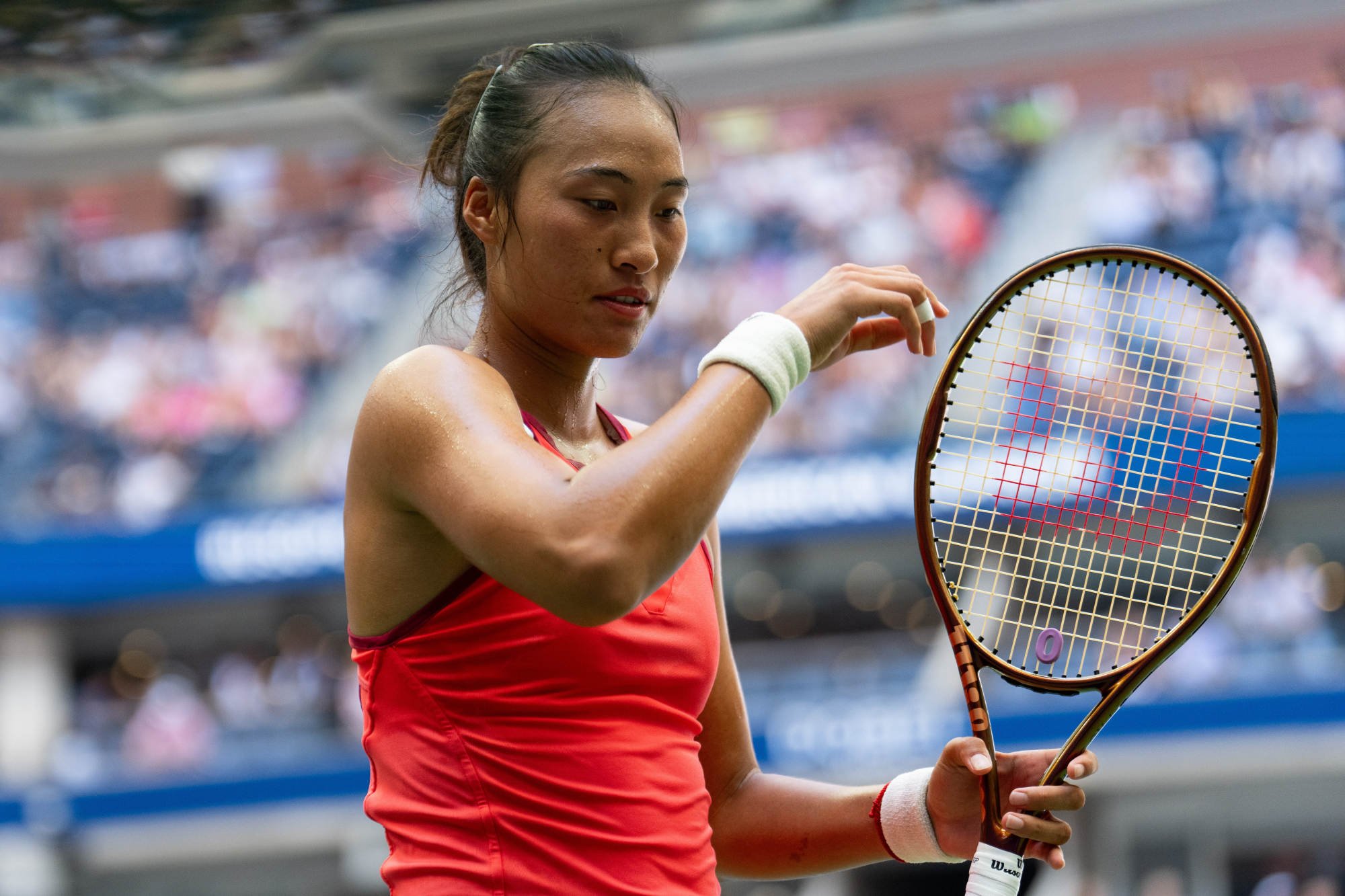
US Open: China’s Wang Xinyu through to women’s doubles semi-finals, Zheng Qinwen admits ‘room to improve’
- The 21-year-old Wang and Taiwanese veteran Hsieh stay on course for second major title of 2023, after winning French Open
- Chinese singles no 1 Zheng reflects on valuable lessons learned in her quarter-final defeat by Aryna Sabalenka
Roland Garros champions Wang Xinyu and Hsieh Su-Wei stayed on course for a second major title in 2023 after battling past Coco Gauff and Jessica Pegula to reach the semi-finals of the US Open women’s doubles on Wednesday.
China’s Wang and Taiwan’s Hsieh beat the American pair in three sets – 7-6(3), 3-6, 6-4 – on Louis Armstrong Stadium at Flushing Meadows in New York.
The No 3 seeds saw a double break advantage evaporate in the decider, but regained their composure to win the next two games and seal victory.
It was Wang and Hsieh’s fourth three-set victory at the tournament, and they next face New Zealand’s Erin Routliffe and Canada’s Gabriela Dabrowski on Friday for a place in Sunday’s final.

The 16th seeds upset sixth seeds Leylah Fernandez and Taylor Townsend 2-6, 6-3, 7-6 in the quarter-finals. The other semi-final will pit the 2020 champions Laura Siegemund and Vera Zvonareva against unseeded duo Jennifer Brady and Luisa Stefani.
Should Wang and Hsieh win the title, the 37-year-old Taiwanese veteran will become a women’s doubles world No 1 next week.
Hsieh is now 16-0 at grand slams in 2023, having won the French Open with Wang in June and then Wimbledon with Barbora Strycova a month later.
Her feats have been even more remarkable given she only returned to the WTA Tour at the Madrid Open in late April after taking an 18-month break. She is now seeking her seventh major title overall, and her first on a hard court.
It has also been a productive fortnight for the 21-year-old Wang, who made it through the fourth round in the singles for the first time at a grand slam event.
China has enjoyed plenty of success at this year’s US Open, led by No 1 women’s singles star Zheng Qinwen, who reached her first major quarter-final only to be beaten by new world No 1-in-waiting Aryna Sabalenka on Wednesday.

The Chinese 23rd seed had never previously gone past the fourth round of a grand slam and hopes her quarter-final appearance in New York is a career milestone.
“There is still a lot of room for me to improve, especially she make me think a lot, once again, that I have to go back and put some work [into] my tennis,” Zheng said.
She won her maiden title on the WTA Tour in July in Palermo, soon after she began working with coach Wim Fissette, a veteran who counts major winners Naomi Osaka, Victoria Azarenka, Angelique Kerber and Kim Clijsters among his former clients.
“I was kind of impressed by her, first of all, like the athlete she is. It’s very impressive, strong and really fast on the court,” Fissette told reporters.
“Also really explosive, and you see that in her strokes – big serve, big forehands. Lots of possibilities. But also still pretty raw.”

The partnership continued to pay dividends in New York as she beat last year’s runner-up Ons Jabeur in the fourth round, her first win over a top-10 player at a grand slam.
Zheng flummoxed opponents with her heavy spin forehand that has quickly become a signature weapon and delivered a tournament-high 28 aces en route to the last eight.
Fissette said the plan was to fine-tune her decision making.
“On the [hard court surface] I still feel like she’s looking to understand who she really is and to use her strokes like the best possible way with the right strategy,” he said.
“Plan A should be controlling the point from the serve or from the return, and plan B is definitely with her speed and also her defensive skills should be super consistent.”


